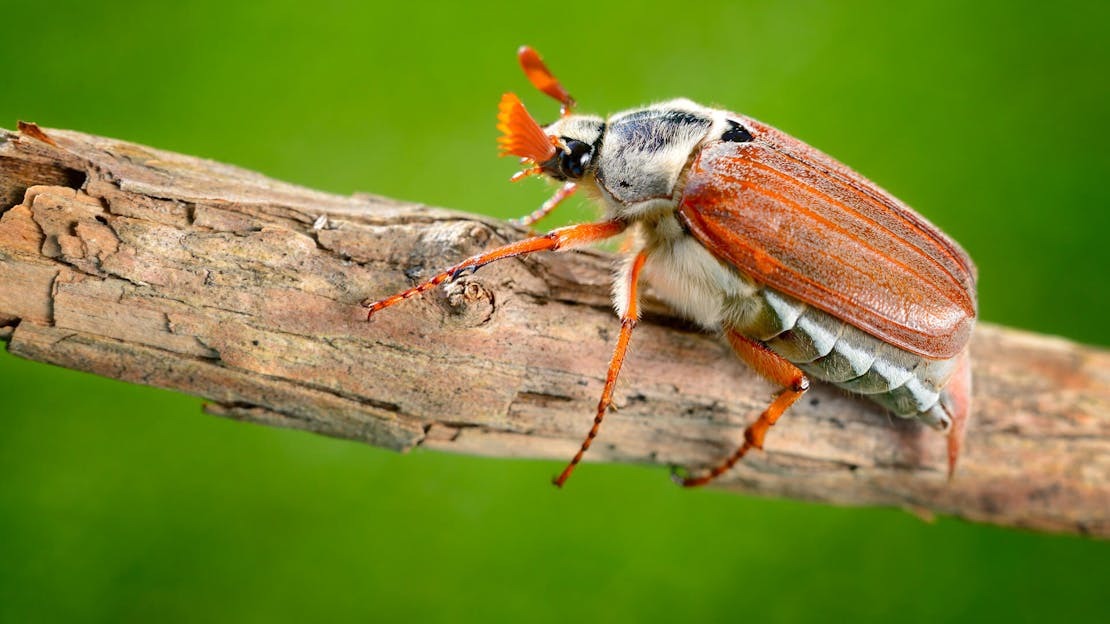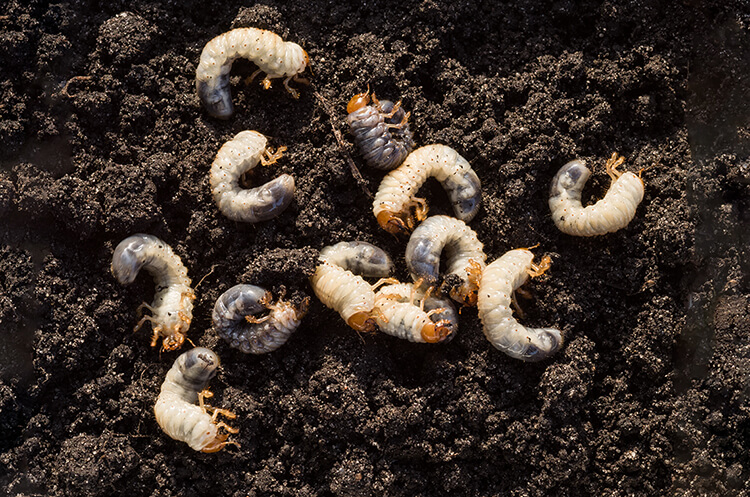
Chafer Grubs
The grubs live in lawns eating the grass roots. If the infestation is bad enough damage can be caused by birds and animals eating the grubs
A very common insect throughout the UK and Europe hatching in May to June – hence the name June Bug!
The adult chafer beetle does no damage to turf but the larvae or grub likes to dine on grass roots. In most occurrences the damage is minimal but if the grubs build up into large numbers then areas of your lawn can suffer damage and drying.
The most serious damage will occur when the local wildlife find that your lawn contains a few kilos of highly nutritious and protein rich larvae! Hopefully it will be just birds pecking and tugging at the loose turf because if a badger discovers them, then kiss goodbye to a large area of lawn!! Hedgehogs and foxes will also find your lawn a delicious banqueting table! So, let the birds clear the lawn of root eating grubs as quickly as possible thus removing future problems. Might not be easy standing back and watching the destruction but there is no other choice.
If you see chafer beetles or grubs don’t panic. Most lawns and gardens have a healthy number living in and around them without any discernible damage. They are part of the natural balance and make your garden a more interesting and rewarding place.
Identification
Grubs are typically around 1 to 1.5cm and have a cream coloured body with orange to brown head section. They have three pairs of quite distinct insect type legs.

If you have a problem you will notice one of three things:
- Adult beetles can be seen around May & June. If you see a lot then be prepared for possible problems later in the year
- Grubs are most evident and causing damage in spring and late autumn
- Patches of lawn dry severely and the turf can be pulled or peeled up easily – look for grubs on or just below the soil surface
- Lawn damage as the wildlife starts ripping and pulling moss, grass and thatch out of the lawn. Once again look for chafer grubs on or just below the soil surface
If you suspect a problem peel back several patches of turf and if you have more than about 5 grubs per square foot then damage will more than likely occur. As there is no pesticide now available scarification, aeration and over seeding will be required after an attack to reduce the population and repair the lawn.
Nematodes
These are beneficial insect-parasitic roundworms and in the hands of the professional can control chafer grubs. In the hands of the amateur their use is problematic as follows:
- They need to be stored correctly
- Applied by soil injection, micro-hollow tining or sprayed after slitting
- Applied at the correct stage of grub development
- A certain level of soil moisture and temperature must prevail
- Use of a wetting agent is common to assist the nematodes to move throughout the soil
- Nematodes need to find grubs upon which to parasitize otherwise the nematodes die
- Nematodes are susceptible to ultra-violet light and dessication so need to be introduced early morning or late evening
Given up yet?